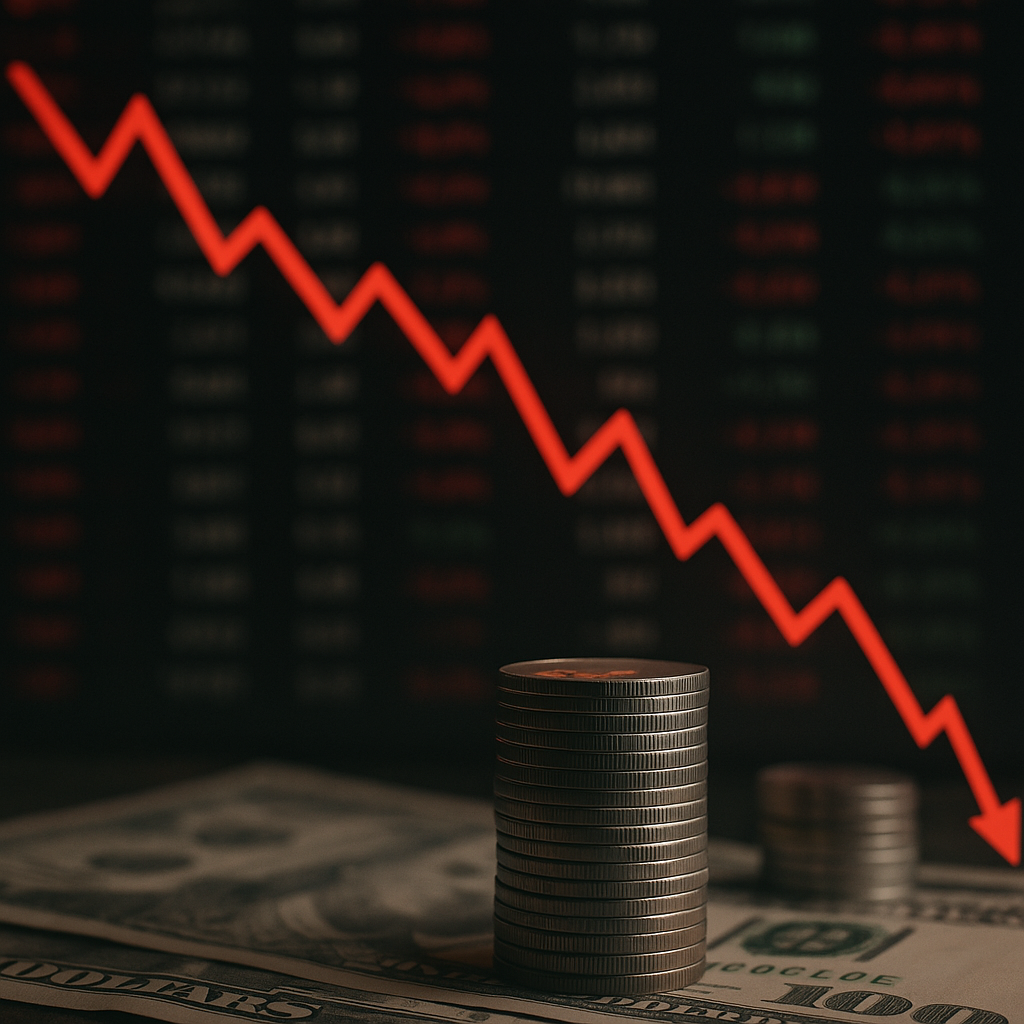After months of unstoppable gains driven by artificial intelligence euphoria, global markets are taking a breath — and so are AI-heavy tech stocks. The sector that once seemed untouchable is now showing its first signs of fatigue. As investors digest record-high valuations and cooling momentum, the question echoing across Wall Street is whether the AI boom is entering its first real pause.
AI Euphoria Meets Market Reality
Artificial intelligence has been the defining investment theme of 2025, propelling mega-cap names like Nvidia, Microsoft, and Alphabet to historic highs. Yet over the past week, the same companies that fueled the market’s rally are leading a sharp pullback.
According to Reuters and SWI swissinfo.ch, global markets fell on Tuesday as AI-driven equities dragged broader indices lower. The Nasdaq Composite lost over 1.8%, while the MSCI World Index posted its steepest daily decline in six weeks. Analysts point to a mix of valuation fatigue, profit-taking, and shifting investor sentiment.
“The market is reassessing whether AI revenue growth can justify these valuations,” said a senior strategist at Morgan Stanley. “We’re not seeing the end of the AI trend — but we are seeing a pivot from speculative optimism to fundamental scrutiny.”
Why This Matters for Investors
AI has been the backbone of 2025’s market rally, accounting for a large portion of the S&P 500’s year-to-date gains. But investors may now face a new phase: one where results, not promises, determine price performance.
Despite strong demand for GPUs and cloud-based AI services, profit margins are tightening as companies ramp up spending on infrastructure. According to The Guardian, corporate capital expenditure in AI is up nearly 45% year-over-year, but revenue growth has not kept pace.
For high-profile AI firms, this mismatch between costs and returns could lead to slower earnings momentum — and potential valuation resets. Even Nvidia, which recently posted record earnings, has seen analysts revise price targets downward amid concerns about supply bottlenecks and market saturation.
Signs of Sector Rotation
Data from Bloomberg Intelligence shows that hedge funds have started trimming exposure to overbought AI names, rotating into semiconductors, industrial automation, and cybersecurity — sectors expected to benefit from AI adoption without carrying the same valuation premium.
Meanwhile, long-term investors are focusing on companies that can integrate AI into tangible revenue-generating models. “Execution will separate winners from hype stocks,” noted UBS strategist Karen Liu. “Investors want to see scalable products, not just ambitious roadmaps.”
Future Trends to Watch
Despite the short-term volatility, the long-term AI narrative remains powerful. Governments are doubling down on AI infrastructure, and private capital continues to pour into data centers, semiconductor fabrication, and algorithmic research.
According to a recent McKinsey report, the global AI market is expected to exceed $1.3 trillion in annual value by 2030, driven by productivity gains across manufacturing, healthcare, and finance. However, the report warns that investor enthusiasm must balance with realistic expectations — especially as regulatory frameworks tighten and power costs surge.
Key Investment Insight
This correction may not mark the end of the AI bull run — but rather a healthy reset. Investors should be cautious with high-multiple stocks lacking clear monetization paths and consider reallocating to firms with tangible earnings, recurring revenue models, and strong balance sheets.
Areas like AI infrastructure (chips, cloud storage, energy grids) and AI-enabling industries (robotics, industrial automation, cybersecurity) remain structurally attractive. However, selective positioning and disciplined risk management are now essential.
Stay Ahead with MoneyNews.Today
As the AI trade matures, investor focus must shift from speculation to sustainable performance. For timely market insights, credible analysis, and data-backed reporting, follow MoneyNews.Today — your trusted source for what truly moves global capital.





